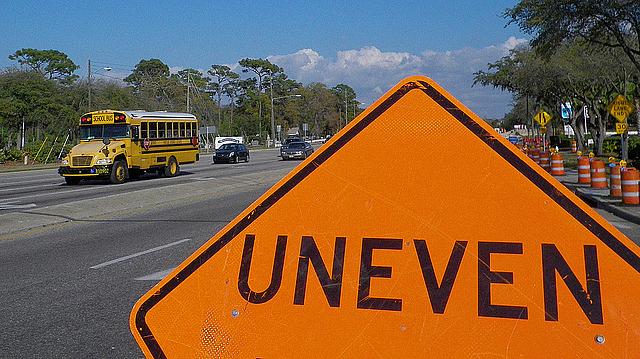In one Florida county, a skyrocketing failure rate for black children

Here’s a jarring fact: Five of the worst elementary schools in Florida are clustered in a 15-square-mile area in Pinellas County’s black neighborhoods.
Eight in 10 students at the schools are failing reading. Nine in 10 are failing math.
Black students are doing worst of all: In 2014, 964 black children were tested in reading and math at the five schools. Nine hundred and twelve failed one or both subjects.
At Melrose Elementary – the most segregated school in Pinellas County, and the worst school in Florida – 97 percent of black students failed reading or math. Behavior problems are rampant. Teacher turnover is a constant.
And the phenomenon is recent: A decade ago, students at the schools were scoring close to the average on state standardized tests. Classrooms were easier to control. Teaching staffs were more stable.
What happened?
The Tampa Bay Times has assembled a team of three reporters and tasked them with finding out.
We have spent the past year scrutinizing every Pinellas County School Board decision and every district policy and practice that affects the students in these five schools.
We have interviewed parents of more than 100 children, dozens of current and former teachers, past and present district leaders and education experts nationwide. Supported by two full-time data reporters, we have scrutinized millions of computer records and pored over tens of thousands of pages of state and district documents.
Our initial efforts are focusing on three key areas: student performance, teacher quality and classroom behavior.
In examining student performance, we are using a decade’s worth of results from Florida’s standardized tests. We’re treating the scores not necessarily as a measure of how well our county’s students are learning but as a yardstick to compare students elsewhere in Florida. What we’re seeing is unsettling. Black students in Pinellas, one of Florida’s wealthiest counties, are trailing far behind their peers in other large, urban school districts. They’re also trailing black children in medium and small districts across Florida. Only in a handful of the state’s poorest, most rural counties are black children consistently doing worse than in Pinellas.
The idea of looking at behavior sprang from our interviews with students and their parents and guardians. Using Florida’s open-records laws, we obtained incident-level discipline data and spent months examining it. Our analysis is showing disturbing trends in the five schools we’re targeting. The rate of violent incidents — including fights, beatings and sex assaults — has climbed sharply in each of the schools, even as overall rates of violence have remained flat or gone down in other of the district’s elementary schools.
To gauge how teacher quality has changed in the past decade, we are using several measures. Aided by the Times’ data and digital enterprise team, we are looking at teacher experience level, education level, discipline history, withdrawals, firings and terminations – even how many tries it took teachers to pass state certification tests. We’re finding that, by many of these measures, the teaching staffs at the elementary schools in Pinellas’ black neighborhoods are worse off than they were in 2005.
Getting to the bottom of what’s driving these trends is going to take more digging and some frank conversations with local policymakers. The project, supported by a grant from the Fund for Journalism on Child Well-Being and the 2015 National Health Journalism Fellowship, will continue. But our hope is, at the end of the day, we’ll have emerged with a series of stories that will begin an important conversation in our community – one that will lead local officials to contemplate better ways of reaching students who deserve better than they’re getting.
[Photo by Daniel Oines via Flickr.]

